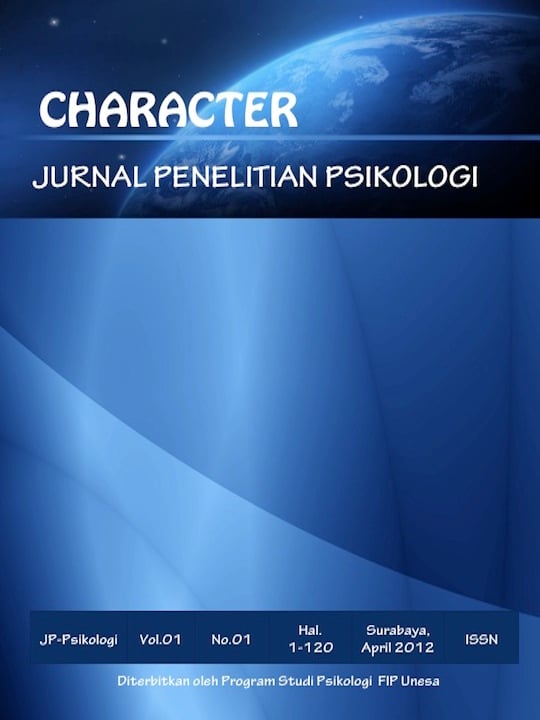HUBUNGAN ANTARA KEPEMIMPINAN TRANSFORMASIONAL KEPALA SEKOLAH DAN AUTONOMY SUPPORT DENGAN JOB CRAFTING PADA GURU SMAN 2 BLITAR
DOI:
https://doi.org/10.26740/cjpp.v8i3.41204Abstract
Abstrak
Sumber daya manusia pada lembaga pendidikan di Indonesia masih dibutuhkan perhatian khususnya dalam meningkatkan rasa inisiatif pada para guru dalam melakukan pekerjaanya yang dalam hal ini dipengaruhi oleh gaya kepemimpinan transformasional kepala sekolah dan pemberian sistem autonomy support dari kepala sekolah yang memberikan kebebasan bagi para guru dalam mengerjakan tugas-tugasnya secara kreatif dan inovatif. Penelitian ini bertujuan untuk mengetahui adanya hubungan antara kepemimpinan transformasional kepala sekolah dan autonomy support terhadap job crafting pada guru di SMAN 2 Blitar, Metode penelitian ini menggunakan metode kuantitatif dengan instrumen penelitian menggunakan kuesioner dengan skala likert. Teknik pengambilan sampel pada penelitian ini menggunakan teknik analisis regresi berganda dimana peneliti mengambil partisipan sebanyak 75 guru di SMAN 2 Blitar dengan rincian
30 guru sebagai sebagai pengambilan data tryout dan 45 guru yang terpilih akan dilakukan sebagai pengambilan data. Skala yang dibuat disusun berdasarkan teori masing-masing variabel yang menggunakan uji analisis regresi berganda dengan bantuan IBM SPSS 25.0 for windows. Hasil penelitian menunjukkan bahwa terdapat hubungan yang positif dan signifikan antara kepemimpinan transformasional dan autonomy support dengan job crafting pada guru di SMAN 2 Blitar. Hubungan kedua variabel dapat diartikan searah dikarenakan semakin tinggi kepemimpinan transformasional dan autonomy support maka semakin tinggi pula hasil yang didapatkan pada job crafting.
Kata Kunci: job crafting, kepemimpinan transformasional, autonomy support
Abstract
Human resources in educational institutions in Indonesia still need attention, especially in increasing the sense of initiative for teacher in doing their work, which in this case influenced by the transformational leadership style of the principal and the provision of an autonomy support system from the principal which provides freedom for teachers to carry out their duties. This study aims to determine the relationship between the principal's transformational leadership and autonomy support on job crafting for teachers at SMAN 2 Blitar. This research method uses quantitative methods with research instruments using a questionnaire with a Likert scale. The sampling technique in this study used a multiple regression analysis technique where the researcher took 75 employees at SMAN 2 Blitar with the details of 30 employees being used as tryouts and 45 employees being used as data retrieval. The scale made is compiled based on the theory of each variable using the multiple regression analysis test with the help of IBM SPSS 25.0 for windows. The results showed that there was a positive and significant relationship between transformational leadership and autonomy support with job crafting for teachers at SMAN 2
Blitar. Relationship between the two variables can be interpretation as unidirectional because the higher transformational leadership and autonomy support, the higher the results obtained on job crafting. Keywords: job crafting, transformational leadership, autonomy support
Downloads
Downloads
Published
How to Cite
Issue
Section
License
Authors who publish in this journal agree to the following terms:
Copyright in any article is held by the author.
The author grants the journal, publication rights with the work simultaneously licensed under a Creative Commons Attribution License that allows others to share the work with an acknowledgment of the work's authorship and initial publication in this journal.
Authors may enter into separate, additional contractual arrangements for the non-exclusive distribution of the journal's published version of the work (e.g., posting it to an institutional repository or publishing it in a book), with an acknowledgment of its initial publication in this journal.
Authors are permitted and encouraged to post their work online (e.g., in an institutional repository or on their website) prior to and during the submission process, as this can lead to productive exchanges, as well as earlier and greater citation of published work.
 Abstract views: 302
,
Abstract views: 302
, PDF Downloads: 316
PDF Downloads: 316





